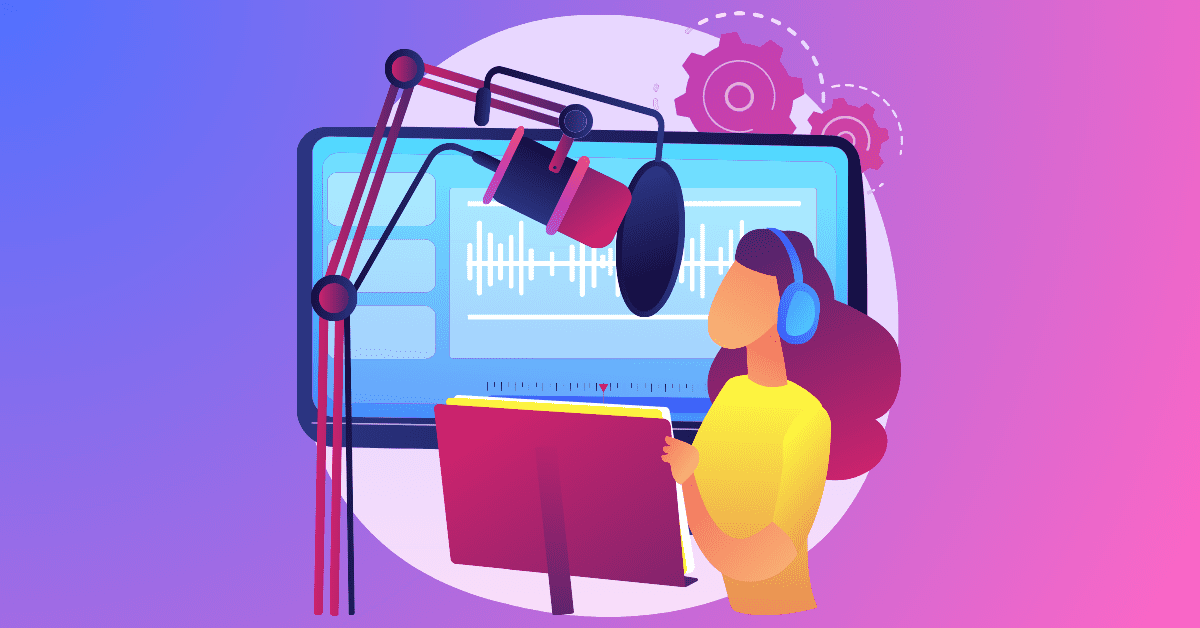You may not realize it, but almost every video project you watch contains voice dubbing, from commercials to Hollywood films and TV shows. The key with voice dubbing is that no one ever notices it.
Both dubbing and voice over play important roles in audiovisual projects, but the two have very distinct uses. When creating your own projects, it’s important to understand the purpose of each one.
So whether you’re new to the concept of dubbing and voice over or looking to deepen your understanding, you’re in the right place. Let’s jump right in.
What Is Voice Dubbing?
Voice dubbing is the process of replacing the originally recorded audio in video content with an audio track recorded after the fact. It’s used in a range of video projects all the time for many reasons.
Audio dubbing can be used to replace audio that wasn’t high quality enough or had distracting background noise, to change what’s being said, to add dialogue that was never recorded, or to correct mistakes made by the actors.
It’s also commonly used to localize content to different audiences by dubbing videos into different languages –– like dubbing an English TV show into Spanish for Latin American viewers.
Dubbing typically includes acting and attempting to impart the original emotion of the video into the new dubbed audio. Unless an actor can match the energy of the original scene, it’ll be very obvious that the audio was recorded in post-production.
Voice actors must not only convey the words accurately but also capture the tone, emotion, and nuances of the original performances, preserving the artistic integrity of the content.
The goal with dubbing is to make it sound like the dub doesn’t even exist — the viewers should not notice the replacement audio track allowing them to fully engage with the story or message being conveyed.
Voice Over Vs. Dubbing
Dubbing is related to the audio in the scene being played out, spoken by the actors within the movie or TV show, while they’re on screen.
Meanwhile, voice overs are audio that originates from outside the world of the story, not from a character within it. A voice over provides additional information, context, or commentary to visual content.
For example, in a commercial, a voice over may provide additional commentary about the product being sold. A nature documentary voice over may narrate what’s being shown on-screen to add context for viewers.
So, while dubbing blends with the story, voice overs act like a guide for the audience. Picking the right one depends on what you want to achieve in your video.
Key Differences Between Dubbing And Voice Over
Technically, dubbing and voice over are similar — they’re both audio tracks recorded after filming to be embedded in the project alongside the visuals. But there are some key differences between dubbing and voice over, which are important to note.
- Dubbing replaces original audio, requiring a voice actor to take on the role of a fully immersed character in the original scene. Voice over does not replace but instead serves as an additional element to a project.
- Dubbing is active and immersive, but voice over provides commentary.
- Voice overs are meant to be noticed, as a key part of the project. But dubbing is meant to be “invisible”. Viewers shouldn’t recognize dubbed audio as distinct from what was recorded during filming.
- Dubbing is meant to trigger human emotion. Voice over, however, is essentially verbal captioning, designed solely to convey information.
- Dubbing is commonly used in films, television shows, and video games to replace dialogue or enhance the viewer’s experience, while voiceovers are found in commercials, documentaries, educational videos, and presentations.
- Actors involved in dubbing need to convey emotions, tone, and inflections that match the original performances, while voice over artists tend to stay more neutral.
To learn more, check out our blog post exploring the nuances of voice overs.
When To Use Dubbing
The use of voice over is straightforward — it’s needed in scenes where additional information, which i
sn’t played out on screen, is needed.
The question of when to use voice dubbing is more nuanced. Here are some examples of when voice dubbing is extremely useful.
- To rerecord audio when video production is already finished
- To change the script that was used while filming
- To translate and localize video content
- To fix stumbles or mistakes made by actors that were missed while filming
- To rerecord scenes that had too much background noise while filming on location
- To adapt content to different cultural contexts, ensuring that the target audience will understand jokes or comments
- To meet specific language or censorship requirements for legal reasons that may not have been clear while filming
No matter the use, it’s essential to ensure your voice dubbing is high quality. Poor audio dubbing can detract from the viewer’s experience.
Try Out Voice Dubbing With Genny
Understanding the nuances of voice dubbing and voice overs is essential when creating any video project.
Now, it’s time to put this knowledge into action. For all your voice dubbing needs, Genny is the answer. An online tool that offers a remarkable range of 600+ voices in over 100 languages, Genny is LOVO AI’s text-to-speech generator, which is nearly indistinguishable from a human-recorded voiceover.
With Genny, you can effortlessly create new audio for your videos, ensuring your content resonates with audiences across the globe. Instead of paying voice actors and booking recording times, this AI-powered supertool is designed to elevate your projects to the next level.
Give Genny’s AI voice generator a try today and unlock the potential to engage, inform, and inspire a broader audience like never before. Try Genny now and let your videos speak to the world!


